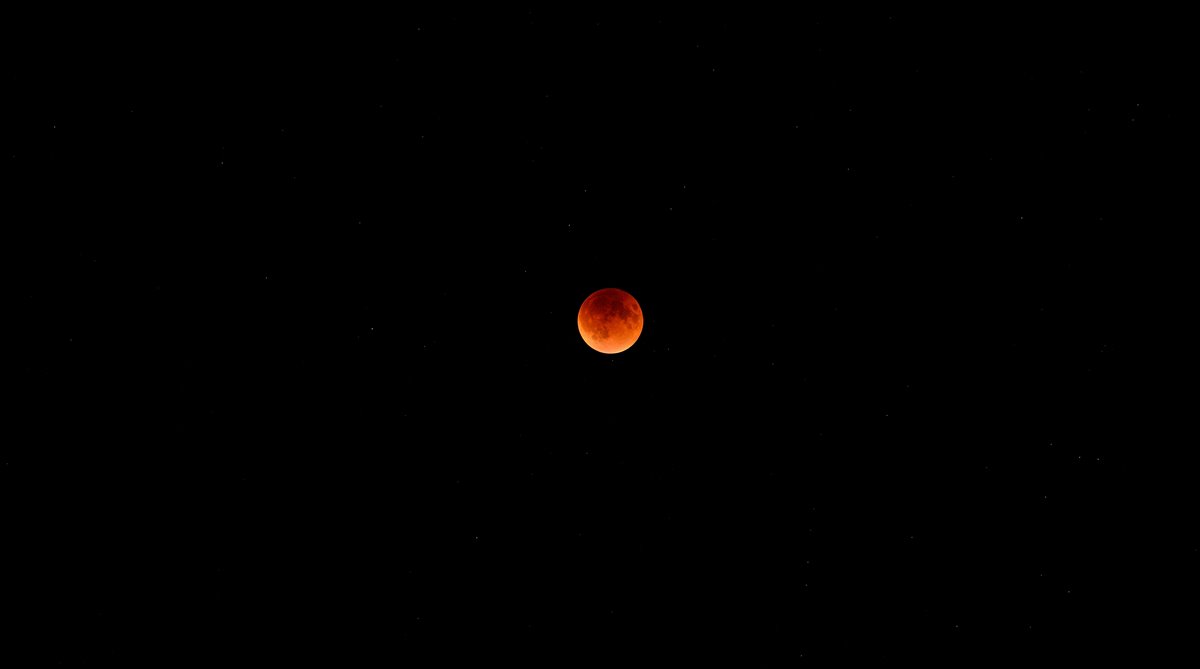Blood Moon dazzles Earth in longest lunar eclipse of century
Bad weather thwarted the cosmic display in several parts of the world.
Visible from every inhabited place on Earth except Greenland, Canada and the USA, the 2018 lunar eclipse will begin in India at 11.44pm IST on Friday night.

It is only during total lunar eclipse that one can see the Blood Moon.(Photo: Getty Images)
Lunar eclipse 2018: Today, 27 July, people in almost all parts of the world will get to witness a Micro Blood Moon or Mini Moon. It will be the longest lunar eclipse of the 21st century lasting for about 5 hours with the actual eclipse having a duration of 1 hour and 43 minutes.
Visible from every inhabited place on Earth except Greenland, Canada and the USA, the 2018 lunar eclipse will begin in India at 11.44pm IST on Friday night, 27 July, and continue till 4.58 am just before dawn of Saturday, 28 July.
Advertisement
Indian moon-gazers will be able to see the total lunar eclipse at 1 am, Saturday, 28 July. The moon will be in the middle of the Earth’s shadow from 1.15 am to 2.43 am. It is at this point that the moon will appear blood red in colour in a phenomenon called the Blood Moon.
Advertisement
Read More: What is a lunar eclipse | 7 universal facts to know
Of course, everything boils down to the weather. Monsoon clouds are now over most parts of India, which means thousands of star-lovers will not be able to see the Blood Moon.
What is a Blood Moon and why is it red?
A lunar eclipse is an astronomical phenomenon where the Earth passes between the Sun and the Moon. A total lunar eclipse happens when the three are lined up perfectly. It is only during total lunar eclipse that one can see the Blood Moon.
Even kids in school know that the Moon has no light of its own and is illuminated by the light of the Sun, which is reflected back to Earth. During a total lunar eclipse, the sunlight to the moon is blocked by the Earth – but not all light.
Earth’s unique atmosphere allows for the refraction of light. It is this refracted light that falls on the Moon during a total lunar eclipse. But the atmosphere of the Earth acts as a lens. Thus the refracted light paints a red-orange colour on the Moon’s surface. The reason why only red-orange is visible is because of the wavelength of light. Remember VIBGYOR and the prism experiment? Red has the highest wavelength in the spectrum. When the sunlight passes through the Earth’s atmosphere – a prism – towards the moon, all other light gets scattered away except red. This is why we see the moon bathed in red instead of, say, green, blue or violet. (Though we would love to see a violet moon, wouldn’t we?)
How red the Moon appears depends on the Earth’s atmospheric conditions. A clearer atmosphere will make the red shade appear brighter and lighter.
If there were no prism – Earth’s atmosphere – the moon would appear completely black. But in that case, there would no earthlings to experience it.
Is this a Super Moon, like before?
On 31 January the world witnessed a massive Moon during the first total lunar eclipse of this year. It was called the Super Moon due to the size of our planet’s natural satellite. This time, however, the Moon will appear smaller.
The reason is its distance from the Earth. At the time of the Super Moon, our satellite was relatively closer to Earth than it is now. The Moon is currently in apogee, which is the farthest distance of the satellite from Earth. (A similar celestial event in which the Earth is farthest from the Sun is called aphelion.) Since the Moon is far from Earth, the speed of the moon travelling across the night sky will appear slow. This is why the lunar eclipse will last longer than usual.
The Blood Moon that we will see today is therefore being called Mini Moon, or Micro Blood Moon.
But there is no reason for star-gazers to feel disappointed. Even though it is a Micro Blood Moon, or Mini Moon, one can easily watch the celestial phenomenon in all its glory with the naked eye. It is perfectly safe to see a lunar eclipse. A binocular or a telescope with proper filter will make the experience even better.
What is especially beautiful about the Micro Blood Moon phenomenon of this century is that the planet Mars will appear next to it. Those who also want to see the Red Planet will have to look to the right of the Moon during the eclipse at a distance of three fingers with arms stretched. A bright red spot will be Mars.
Advertisement